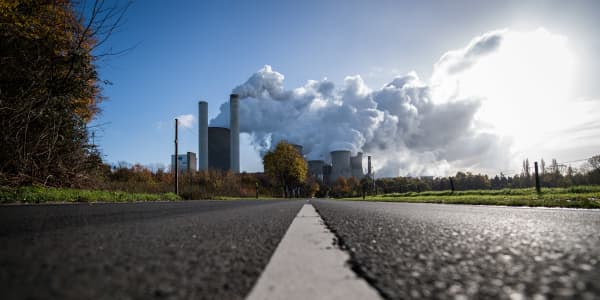Around the world, cities and towns are getting bigger, with people moving to built-up areas in greater numbers in search of economic opportunity and success.
This mass movement looks set to accelerate. In 2018, the United Nations said that 55% of the planet was living in "urban areas" and forecast that this would rise to 68% by the middle of the century.
Cities and towns are undoubted centers of finance, culture and politics, but will they also have a role to play when it comes to strengthening food security and feeding the planet? According to a recent study, published in the journal Nature Food, the answer could be yes.
Researchers from the University of Sheffield found that using only 10% of a city's urban green spaces and gardens to grow food could provide 15% of the local population – which equates to 87,375 people in Sheffield – with five portions of fruit or vegetables per day.
"Urban areas are particularly well suited to growing horticultural crops – fruits and vegetables," Jill Edmonson, from the university's Institute for Sustainable Food, told CNBC.com via email.
"Urban horticulture could play a really important role in strengthening local food security as the majority of people live in cities and towns … providing access to fresh nutritious produce close to the source of demand," she added.
Edmonson went on to explain that urban areas were "made up of a mosaic of smaller patches of greenspace" such as gardens, to larger ones like allotments.
"You can grow a variety of different fruit and vegetables in these spaces, at different scales – for example picking your favourite fruit, like strawberries, to grow in a small patch in your back garden, or a full variety of crops from onions and spuds to blueberries and asparagus in an allotment plot."
The growing of crops such as wheat was not really viable in urban settings, Edmonson added, as these types of crops needed larger areas and processing before being used as food.
Not getting access to enough food is a serious situation which affects people around the world. The UN has described an estimated 821 million people on the planet as being "undernourished," with one in nine not getting "enough food to be healthy and lead an active life."
While the potential of growing food in urban areas seems to be significant, there are undoubted roadblocks, not least when it comes to logistics and changing perceptions.
Edmonson explained to CNBC that "realising the potential of urban horticulture" was complex and required the support of local and national policymakers "to overcome the scientific, practical, engineering, socio-cultural and economic challenges."
"However, in light of the current Covid-19 pandemic, there is a clear need to understand how we shorten supply chains and improve national resilience in our food supply."
The U.K.'s supermarkets have seen demand for many products soar during the coronavirus pandemic, with empty shelves becoming a common sight across the country earlier in the year.
This has in turn led to discussions about food security and the resilience of global supply chains, which can be complex and dependent on many different factors to run smoothly.
Indeed, the U.K. is, like many countries, reliant on imports to help meet the needs of consumers. In 2018, "home production" of fruit and vegetables accounted for 16.7% and roughly 53% of the U.K.'s total supply respectively, according to government figures.
Growing food without soil
Other technologies such as hydroponics and aquaponics could also have a role to play in strengthening food security.
The Royal Horticultural Society has described hydroponics as, "the science of growing plants without using soil, by feeding them on mineral nutrient salts dissolved in water." In the case of aquaponics, the waste of fish is used to fertilize crops.
Hydroponics is a flexible technique which does not require natural light to grow produce. Around the world, several businesses are looking to scale-up these kinds of systems.
These include London-based firm Growing Underground, which uses hydroponics and LED technology to grow micro greens and salad leaves in a subterranean facility throughout the year.
The University of Sheffield's Edmonson explained to CNBC that hydroponic and aquaponic systems had "clear potential in urban areas" because they could use underutilized "grey spaces" both on top and within buildings to produce food.
"For example, in Sheffield city centre we found that there was the equivalent of 0.5m2 (meters squared) of grey space, like flat rooftops, per person in the city," she said.
"While this might sound small, hydroponic systems have the potential to produce high value crops, such as tomatoes, at very high yields, year round."




